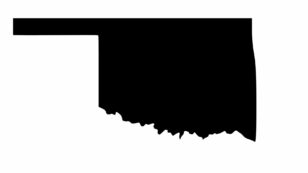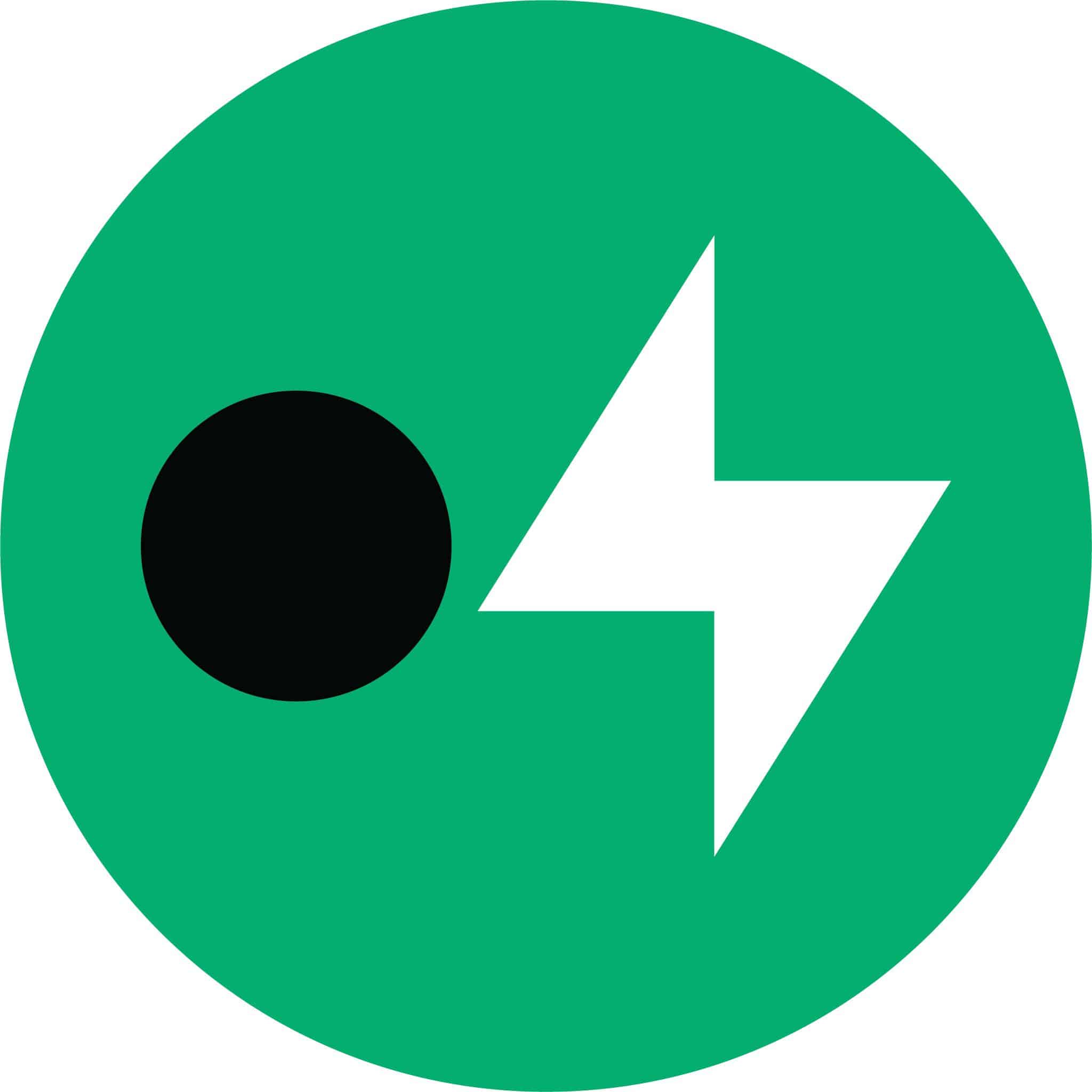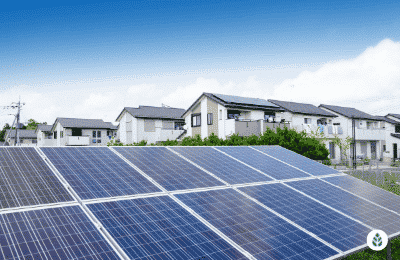
How Much Do Solar Panels Cost in Oklahoma? (2024 Savings Guide)
In this EcoWatch guide on the cost of solar panels in Oklahoma, you’ll learn:
- What the average cost of going solar in Oklahoma is
- How Oklahomans can save money when going solar
- Which local installation companies have the best prices
This guide has helped thousands of Oklahoman homeowners save time and money when going solar in the Sooner State. Let’s get started!
Each product and or company featured here has been independently selected by the writer. You can learn more about our review methodology here. If you make a purchase using the links included, we may earn commission.
Energy bills in Oklahoma cost significantly more than the national average, which means converting to solar energy is a great option for most residents. But they come with a significant up-front cost – so one of the first questions homeowners in the Sooner State typically have when considering renewable energy is, “How much do solar panels cost in Oklahoma?”
In this solar panel cost guide, we’ll be discussing how much solar systems in Oklahoma cost on average, and we’ll explain the different factors that can influence your total.
What Will Your Solar Panel System Cost in Oklahoma?
The typical cost of a solar panel system in Oklahoma is around $36,740, but the federal government’s tax incentives significantly reduce your total bill. After the federal investment tax credit (ITC), your net cost typically runs about $25,718.
However, this is only an average. Your cost can vary quite a lot depending on a few different factors, especially the size of the system you need to power your home.
These totals assume you pay the average price per watt in the area for installing solar power, $3.34, and need an 11 kilowatt (kW) system. This is also standard in the area, based on the average rate of energy consumption. In general, energy bills in Oklahoma are about 20% more than the national average.
But bigger houses will need larger, more expensive solar power systems, while smaller homes can get a way with less expensive arrays. All things considered, most photovoltaic (PV) systems in the state cost between $26,720 and $46,760 before the credit or between $18,704 and $32,732 after the credit.
The table below provides a quick look at average systems sizes, costs, and more, based on your monthly energy consumption. You likely can estimate your home’s energy use by looking at a recent utility bill. This can help you figure out where you’ll fall on the chart.
| Solar System Size | Energy Use (per month) | House Size (sq ft) | Total Cost | Cost After the Federal ITC | Energy Savings (over 25 years, after system is paid off) |
| 8 kW | 800 kWh | 1,400 | $26,720 | $18,704 | $33,628.00 |
| 9 kW | 900 kWh | 1,600 | $30,060 | $21,042 | $38,766.00 |
| 10 kW | 1,000 kWh | 1,800 | $33,400 | $23,380 | $43,904.00 |
| 11 kW | 1,100 kWh | 2,000 | $36,740 | $25,718 | $49,042.00 |
| 12 kW | 1,200 kWh | 2,200 | $40,080 | $28,056 | $54,180.00 |
| 13 kW | 1,300 kWh | 2,400 | $43,420 | $30,394 | $59,318.00 |
| 14 kW | 1,400 kWh | 2,600 | $46,760 | $32,732 | $64,456.00 |

Shine Solar, LLC

Regional Service
Average cost
Pros
- Many financing options
- Great warranty coverage
- Offers a panel buy-back option
- Outstanding workmanship
Cons
- Relatively young company
- Limited brands of solar equipment available

Astrawatt Solar

Average cost
Pros
- Comprehensive service offerings
- Excellent reputation
- Award-winning company
- Educational, no-pressure sales approach
Cons
- Limited service area
- Relatively young company

Shine Solar, LLC

Regional Service
Average cost
Pros
- Many financing options
- Great warranty coverage
- Offers a panel buy-back option
- Outstanding workmanship
Cons
- Relatively young company
- Limited brands of solar equipment available
How Do Oklahoma’s Solar Prices Compare to the National Average?
In general, it is slightly more expensive to go solar in Oklahoma compared with the rest of the country. This is because energy bills are higher than average, meaning homeowners typically need larger systems to compensate for it.
However, the cost per watt to install solar panels in Oklahoma is slightly more expensive than the national average — $3.34 as compared to $3.33 in the rest of the country.
What Are the Main Factors of Solar System Costs in Oklahoma?
Estimating your cost of going solar in Oklahoma is complicated because there are a bunch of factors at play that have an impact on your costs. Below are the main things that affect your pricing:
- Your monthly energy consumption
- Whether or not you opt for solar batteries
- The efficiency of the panels you install
We’ll discuss how each of these factors can affect your total cost to install your system in the following sections.
Oklahoma’s Above-Average Energy Demands
The primary factor that determines your system price is how much energy your home uses in an average month. The higher your energy consumption, the more panels you’ll need to offset your electric bills and the more expensive your system will be.
Oklahomans consume above-average amounts of energy every month, so this will be a big cost factor for most property owners.
While you can install a smaller system and still save money, you’ll save the most over time and see the greatest return on investment from your panels if you size your system to cover your electricity consumption. Paying more at first for a residential solar panel system that will eliminate your electric bills can often lead to thousands of dollars in additional savings over the life of the panels.
Adding a Solar Battery for Backup Power During Storms
Oklahomans are no strangers to severe weather. Along with storm shelters to protect against tornadoes, many residents also opt for solar batteries to maintain power through the frequent blackouts.
Oklahoma is also the ninth highest-ranking state in the country in terms of power outages. Solar batteries can be super useful in an area like Oklahoma, where blackouts are common, but they will also drive up your total system price.
Whether or not you invest in solar batteries is ultimately up to you. Since net energy metering is available to most residents, most people choose batteries solely to maintain power through blackouts, so you’ll need to decide if that convenience is worth it to you. Batteries likely won’t save you any money on utility bills.
Opting for a Less Efficient Solar Panels in Oklahoma
The efficiency rating for the panels you install will determine, to some extent, how many panels you need on your roof. Installing a more affordable panel will usually mean a less impressive efficiency rating. That means you’ll need more panels overall, which can lead to higher total costs.
Many Oklahomans opt for lower-efficiency panels because the sunlight in the area is so plentiful that efficiency plays a smaller role than normal. The state sees 234 sunny days annually, compared to the national average of 205.
If your roof space is limited, then you may need to look for for higher-efficiency monocrystalline panels so that you need fewer of them. Choosing a panel brand like Maxeon from SunPower will cost more at first, but they’re the most efficient options you can buy.
Even a 1% difference in efficiency rating can lead to significant savings over time, making highly efficient panels worth it. This is especially true in an area like Oklahoma, where sunlight is abundant and energy consumption is high.
What Are the Additional Costs of Going Solar in Oklahoma?
The prices we describe above are all-inclusive for a stand-alone solar array in Oklahoma, but there are some minor fees included in there that can affect your total cost. We’ll explain each of these briefly below.
- Building permits: All municipalities in Oklahoma require building permits before solar system installation can begin. Permits can be as cheap as around $50, but they can reach into the hundreds of dollars, depending on your location.
- Additional solar equipment: All panels require racking systems to hold them against your roof, wiring to connect them to your electrical panel, and hardware to mount them. The cost of these can influence your total installation price. Plus, if your panels don’t have microinverters, then you’ll need a stand-alone inverter, which can push up your costs. Opting for solar batteries or an electric vehicle (EV) charger will also drive up your total. All of these factors together can lead to substantial price differences.
- Interconnection fees: Connecting your installed system to the power grid requires an inspection from your utility company and, usually, an interconnection agreement signed along with a fee paid for the service. This fee is usually quite low and is sometimes free, but it can be over $100 in some cases.
- Administrative fees and product markup: Finally, the solar panel installer you choose will charge different administration fees than others and might markup equipment prices differently. We recommend getting a few quotes for service and choosing based on quality, company reputation and overall price.
Watch Below: Is Solar Actually Worth it In Oklahoma?
What Maintenance Costs Can Solar Owners Expect in Oklahoma?
One of the upsides of investing in a solar power system is that there’s minimal maintenance to be done. Your panels can dip slightly in efficiency if they get covered in pollen, dirt or other debris, so some solar customers have their panels washed. However, the energy production loss won’t usually be substantial, and most Oklahomans can get away without having to do any panel maintenance.
If you run into issues with the panels themselves, your inverters or other equipment, you might need to call your installer for assistance. Most solar panel companies have lengthy warranties, though, so you shouldn’t need to pay for any maintenance for years after installation.
Which Solar Financing Options Will Help You Save the Most in Oklahoma?
Although the cost of solar panels in Oklahoma is above average, paying in cash is still our recommended payment option because it leads to the fastest panel payback period and the greatest savings over time.
But there are other options, too. You’ll likely also be able to pay for your solar panels with solar loans, solar leases and power purchase agreements (PPAs), though not every installer offers all of these options.
Cash purchases come with the highest initial costs, but you own your system immediately and can take the federal solar tax credit to (effectively) save an average of around $11,022. The high immediate cost can be out of the question for some Oklahomans, though.
A solar loan is another option we frequently recommend. Like a mortgage, you borrow money for your solar panels and pay it back over time. This eliminates the bulk of that upfront cost and still lets you take the federal credit. The payback period is longer, and the total savings are lower because you’ll be paying interest, but a solar loan also makes taking advantage of the clean energy source more accessible.
A solar lease is where you rent the panels and get to use the electricity they generate to save on your energy costs. Leases can be a decent option for property owners who can’t afford to purchase panels with cash and don’t have the credit score to qualify for a loan. However, the total savings are significantly lower than a loan — usually around 50% lower.
A PPA is when your panels get installed for free, but you never own them. Instead, you agree to pay a below-retail rate for the energy they generate, which should save you a few thousand dollars over the life of the agreement. We don’t recommend PPAs for most homeowners, as leases are about as accessible and provide greater savings.
Since neither a lease nor a PPA will lead to panel ownership, they leave you ineligible for the federal tax credit.
If you’re looking for a good solar installer in Oklahoma that provides access to all of the above financing options, we’d recommend checking out Shine Solar and Astrawatt Solar.
The table below includes some basic information about each of the standard solar payment options from which you can choose. The savings and numbers in the table are specific to Oklahoma residents. You can also use our solar calculator to figure out how much each payment option will save you and which is best for your needs.
| Financing Method | Total 25 Year Savings (estimated) | Initial Costs (estimated, after the ITC) | Monthly Payments (estimated) | Payback Period (estimated) |
| Cash | $22,648 | $25,718 | $0 | 14 years |
| Loan | $17,000 | $0 | $135–$300 | 18 years |
| Lease | $5,000 | $0 | $120 | N/A |
| PPA | $4,000 | $0 | $120 | N/A |
What Are Other Ways You Can Save When Going Solar in Oklahoma?

- Taking advantage of the federal investment tax credit
- Choosing your panel brand carefully
- Consider a solar battery
We’ll explain the role each of these strategies can play in your all-in solar system price in the following sections.
Take the Federal Solar Credit
One of the most significant ways to save money on your solar power system in Oklahoma is to take advantage of the federal tax credit. The ITC was recently extended to 2034, and all residents in the Sooner State can get a credit on their income taxes owed in the amount of 30% of their total installation costs. This comes out to an average of $11,022 in Oklahoma.
Keep in mind that the credit is not a rebate, so you’ll only actually save money if you owe income taxes to the federal government equal to the credit amount. You don’t have to take the credit all at once, though. You can take the credit over five years following installation, so it should be fully available to Oklahomans that owe at least $2,204 annually on federal income taxes.
Also, it’s important to note that this credit isn’t available to solar customers who use leases or PPAs to acquire their panels.
Choose Your Panel Brand Carefully
The price you pay for your home solar system will depend heavily on the panel brand you install. The more expensive your panels are per watt, the higher your installation costs will be.
In Oklahoma, where sunshine is abundant and more intense than in most states, opting for a panel with a lower efficiency rating can save you money upfront. Lower efficiency panels won’t provide the same savings on energy bills over time, but middle-of-the-road efficiency ratings can still flourish in a sunny area like Oklahoma.
With that being said, investing in a higher efficiency rating is often worth it in the long run. You can choose your panel brand based on when you’re looking to save. Choosing a low-efficiency brand could save you thousands on installation costs, but it could also lead to lower savings on utility bills over time.
Consider a Solar Battery
Finally, you might want to consider installing a solar battery. Solar batteries store solar energy produced by your panels and can provide power to your home even when the sun isn’t shining.
Solar batteries can save the most for homeowners who don’t have access to net energy metering since they help offset electricity costs at night, on cloudy days and anytime production doesn’t account for consumption.
Oklahoma mandates its net metering program for investor-owned utilities, including Liberty Utilities, Public Service Company of Oklahoma and Oklahoma Gas & Electric (OGE). If you’re serviced by one of these providers, then a solar battery likely won’t save you much money, if any. However, it can still help you run your home during an electricity blackout.
If you’re serviced by a different company that doesn’t offer net metering, then a solar battery might make financial sense. In fact, it could end up saving you hundreds or thousands on your energy bills, even after it pays for itself. This is especially true in areas with higher electricity rates, like Oklahoma City.
What Are the Typical Costs of Oklahoma’s Solar Installers?
Solar panel installation companies in Oklahoma all charge different prices for their solar equipment and services, so the installer you pick will have an impact on your total as well. The table below includes a side-by-side look at the best solar companies in Oklahoma, including a cost comparison to help you decide which might fit into your budget.
| Solar Company | Superlative | EcoWatch Rating (Out of 5.0) | BBB Rating | Average Cost ($–$$$$$) |
| Shine Solar, LLC | Outstanding Regional Installer | 4.5 | A+ | $$ |
| Solar Power of Oklahoma | Outstanding Local Installer | 4.0 | A+ | $$ |
| Sun City Solar | Solar Veteran | 4.0 | A+ | $$$$$ |
| Radical Solar Energy | Outstanding Local Installer | 3.5 | A+ | $$$ |
| Astrawatt Solar | Outstanding Regional Installer | 4.5 | A+ | $$$$ |
How Are Solar Costs and Regulations Trending In Oklahoma?
As solar gains more popularity in Oklahoma and across the country, the cost of installation is decreasing. Panel production is becoming more and more efficient and affordable, which has led to a 53% decrease in solar installation costs in Oklahoma over the past decade, according to the Solar Energy Industries Association (SEIA).
We expect production costs to continue to decrease, which means the price of buying solar panels should also continue to go down in the Sooner State.
As far as solar incentives go, there have been no major changes to the solar policies in Oklahoma in the recent past. Since the state’s renewable portfolio standard (RPS) goal has expired, there’s nothing to suggest that new tax incentives or rebates will be added or existing ones will disappear in the near future.
If something were to change, we’d expect it to be the net metering policy getting less appealing or disappearing altogether. Net energy metering (NEM) policies are changing across the country and are, overall, becoming less beneficial. There’s no plan for this to happen in OK, but it’s the most likely change to local solar policy.
With that being said, now might be the time to convert to solar before the policy changes. You can use the tool below to get instant quotes for a system designed specifically for your home and energy demands.
The cost information presented in this article is derived from a comprehensive analysis, incorporating data from multiple industry sources. The average cost per watt per state was calculated based on figures from Consumer Affairs, Energy Sage, and Berkeley Lab’s Electricity Markets & Policy Department. Additionally, monthly energy consumption and the average monthly cost of electricity were sourced from the U.S. Energy Information Administration, ensuring a well-rounded and accurate representation of the information presented.
FAQs: Oklahoma Solar Panel Costs
At EcoWatch, we’re happy to get questions about the process and costs of getting rooftop solar from Oklahoma residents. Below are some of the questions we see most often, along with our responses. If you have specific questions that aren’t answered here, reach out to our team of solar experts at solar@ecowatch.com.
According to our data, the average cost of solar panels in Oklahoma is $3.34 per watt or $36,740 for the average 11-kW solar system. However, the cost will vary depending on how many solar panels you need to power your home. If you have a smaller home and lower energy needs, you may only need a 5-kW system which would cost $16,700. All of these figures are before factoring in the 30% federal solar tax credit.
Yes, data from Zillow shows that solar boost property value. In fact, homes with solar panels tend to sell for 4.1% more than homes without.8 However, this data is only valid for homeowners that own their solar system, not for those that have solar leases or power purchase agreements (PPAs).
We always encourage buying solar panels if you can. We know it’s a big upfront investment, but there are many customization and solar financing options to make buying solar panels more affordable. If you choose to lease solar panels, you won’t be eligible for the federal tax credit and can’t take advantage of your increased property value.
If a company approaches you about free solar panels, don’t fall for the trick. Many companies that advertise free solar panels are just using deceptive marketing techniques to rope you into a solar lease or PPA. Unfortunately, these companies are typically just out to make a sale and are not interested in helping you reap all of the benefits of going solar.
Yes, it’s possible to eliminate your current utility energy costs by going solar in Oklahoma because there is a decent net metering policy in place. However, note that you’ll probably need a system of at least 11-kW to fully offset your power bills in Oklahoma.
While the cost seems to be the thing most people zero in on, it’s not always the most important consideration for people buying solar panels. Remember that cheap isn’t always best if you want to maximize your solar savings, as higher-efficient solar panels will be more expensive, but will produce more energy. You’ll also want to make sure that the solar equipment and installation company you choose for the job offers comprehensive warranties to protect your system in the event of damage.
Top Solar Installers In Oklahoma Cities
Comparing authorized solar partners
-
- Many financing options
- Great warranty coverage
- Offers a panel buy-back option
- Outstanding workmanship
- Relatively young company
- Limited brands of solar equipment available
A-Outstanding Regional Installer
Having trouble deciding? Click below and use our process to receive multiple quotes instead:

 233k
233k  41k
41k  Subscribe
Subscribe 



